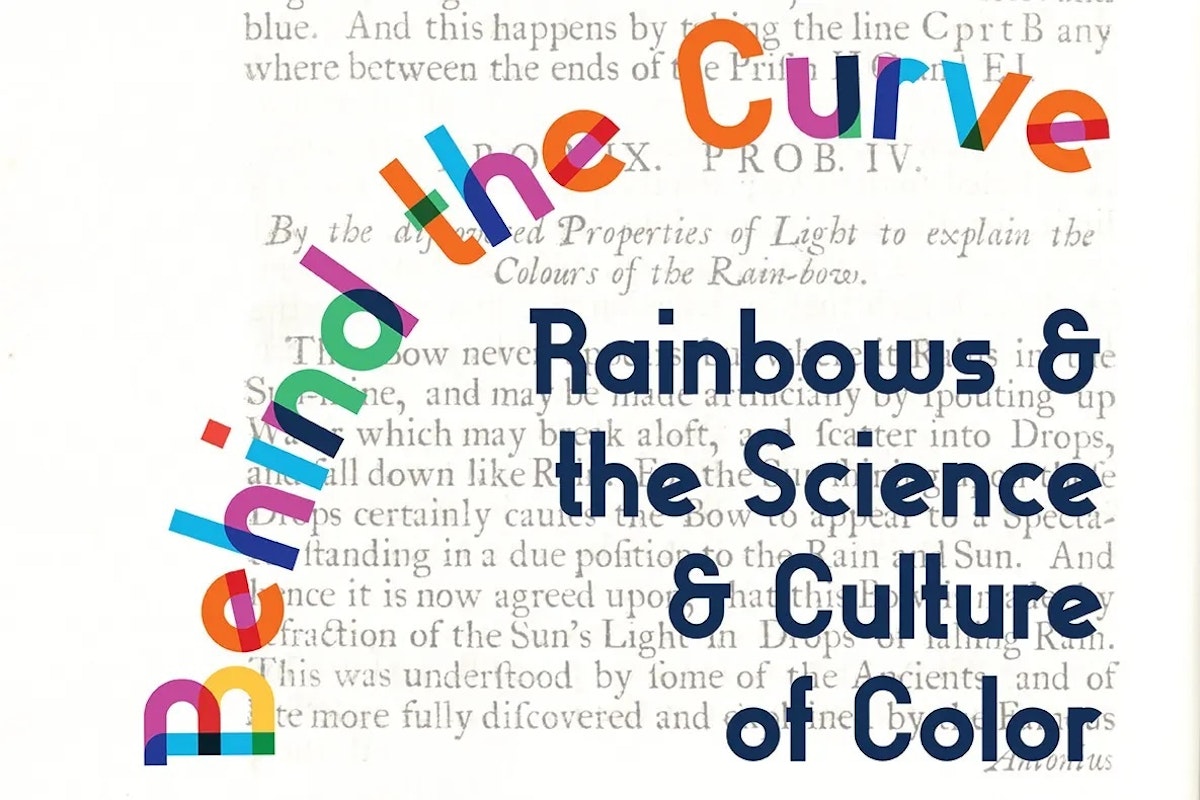Jamie Lausch Vander Broek Curates History of Color Theory Exhibition

Behind the Curve: Rainbows and the Science and Culture of Color, a new exhibition curated by U‑M Librarian for Art, Design, and Art History Jamie Lausch Vander Broek, will be on view through September 4, 2025 in the Hatcher Graduate Library Gallery Exhibit Room. The exhibition features many significant books from the history of our understanding of rainbows and color theory, from the writings of scholar Ḥasan Ibn al-Haytham to Isaac Newton’s 1704 Opticks. Rainbows appear across the spectrum of U‑M’s collections, and this exhibit includes a handwritten illuminated manuscript, practical color manuals of the industrial age, contemporary artists’ and children’s books, and more from the U‑M Library’s vast holdings.
Vander Broek discussed the inspiration behind the exhibition in a Colorful Neighbors: the Science of Simultaneous Contrasts, a May 12, 2025 blog post:
As the child of a color expert for a furniture company and an art professor, I was surprised to learn as an adult of this phenomenon [simultaneous contrasts]. Now that I’ve finished my research for Behind the Curve: Rainbows and the Science and Culture of Color (May 2 — September 4, 2025 in the Hatcher Graduate Library Gallery Exhibit Room), I feel a little better knowing that for 1800 years of recorded history of color theory, no one else had heard of it either.
In the first half of the 19th century, however, a dye chemist at Gobelins, a textile manufacturer in France famous for its tapestries, finally began to uncover the impact that colors have when placed next to one another. Michel Eugène Chevreul (1786 – 1889) was attempting to address the irritations of the Gobelins weavers, who complained that the black fibers they were using looked muddy and muted in the final tapestry. He realized that it was the result of the black fibers and the colors surrounding them. If you’ve ever seen the optical illusion with a series of identical grey squares with different backgrounds that make the squares look totally different from one another – this is what Chevreul is talking about.
In fact, in preparing the exhibit, I took a digitized version of Chevreul’s experiments and started to use it to create an advertisement. I used the eye dropper tool in Illustrator to grab the blue color from a series of dots arranged across the page. The dots were presented next to different colors and in front of different colored backgrounds. After trying one blue, I thought I might experiment with another. And then I remembered: they’re all the same blue! The eye dropper tool confirmed what my eye could not: the exact same shade can look wildly different depending on its surroundings.
Visitors to Behind the Curve can examine a fold out color plate with hand colored dots from Chevreul’s masterwork, De la loi du contraste simultané des couleurs (Paris: Pitois-Levrault et ce, 1839) alongside a work that it inspired the following decade, Jean François Persoz’s Traité théorique et pratique de l’impression des tissus (Paris : Victor Masson, 1846). Together, Chevreul and Persoz inspired a generation of artists, from Van Gogh to Seurat, as well as legendary textile designer William Morris.
Behind the Curve: Rainbows and the Science and Culture of Color
Exhibition Dates: May 2 — September 4, 2025
Hatcher Graduate Library Gallery Exhibit Room (Hatcher Library North, First Floor, Room 100J)